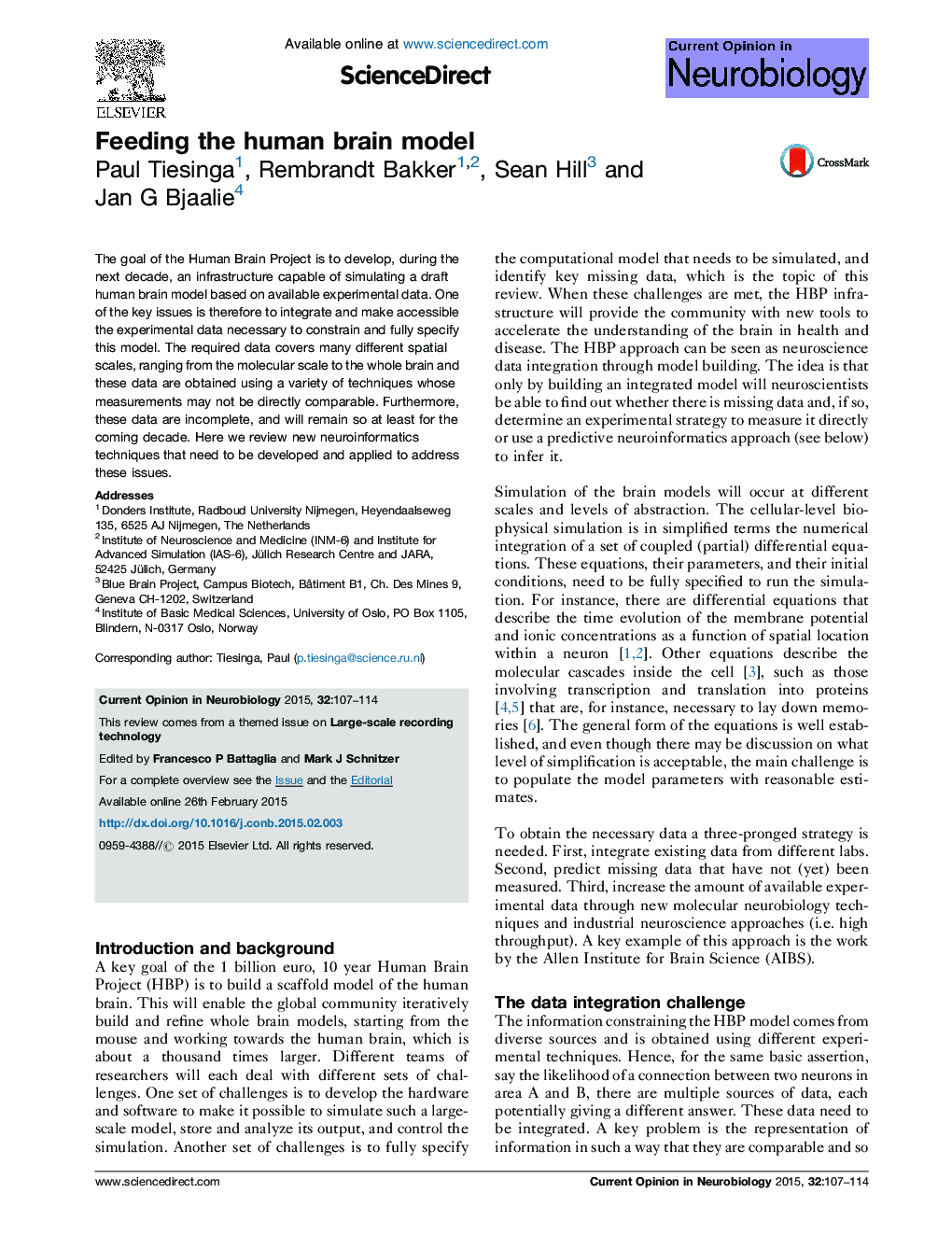| Article ID | Journal | Published Year | Pages | File Type |
|---|---|---|---|---|
| 6266325 | Current Opinion in Neurobiology | 2015 | 8 Pages |
â¢A key challenge of the Human Brain Project is to fully specify the model and identify missing data.â¢Ontologies and modular workflows help to integrate existing data from different labs.â¢Missing data can be predicted using matrix completion and imputation techniques.â¢Molecular neurobiology techniques are rapidly increasing the amount and quality of connectivity data.â¢Industrial neuroscience approaches by the Allen Institute for Brain Science are revolutionizing neuroscience.
The goal of the Human Brain Project is to develop, during the next decade, an infrastructure capable of simulating a draft human brain model based on available experimental data. One of the key issues is therefore to integrate and make accessible the experimental data necessary to constrain and fully specify this model. The required data covers many different spatial scales, ranging from the molecular scale to the whole brain and these data are obtained using a variety of techniques whose measurements may not be directly comparable. Furthermore, these data are incomplete, and will remain so at least for the coming decade. Here we review new neuroinformatics techniques that need to be developed and applied to address these issues.
